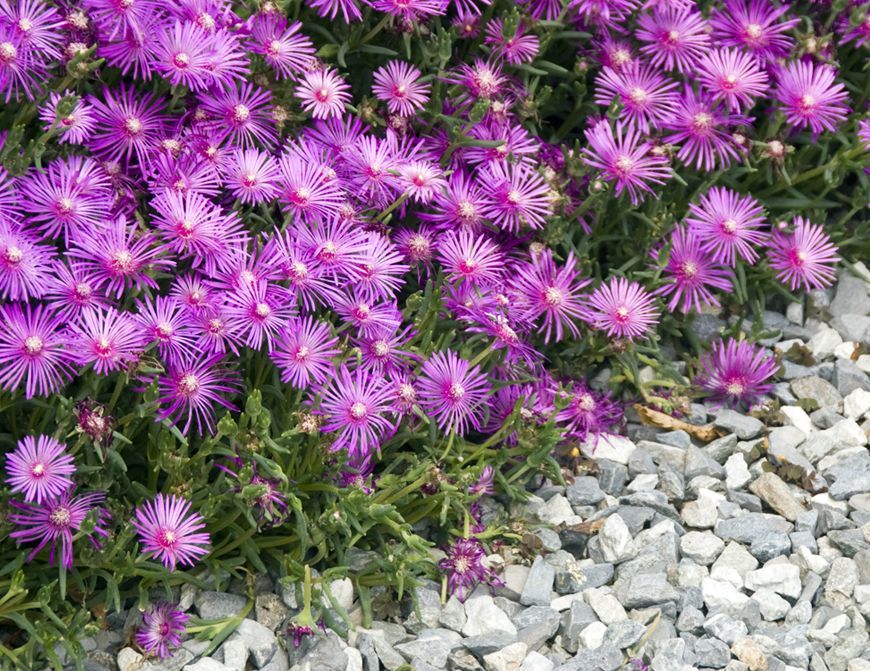Why should we plant into gravel or pebbles?

Planting into gravel or pebbles not only looks great, but it also offers careless maintenance of patches. The gravel serves as a mineral mulch and helps to mantain water in the soil.
Planting into gravel or much more expensive river pebbles or cut and smoothed artificial stones are quite fashionable these days. This planting is suitable for town or village gardens, and modern or rustic buildings. What plants can we plant into gravel and how to prepare patches?

Any kind of aggregates are great cover of patch surface. Moreover, it helps many kinds of perennial plants which are susceptible to fungal diseases due to redundant moisture. The stone keeps their root collars dry. The aggregates are suitable for grass, ferns, and small coniferous trees because they look great. The stone evokes atmosphere of home. In gravel or any other aggregate many plants look more natural than in bark crumblings (bark mulch).

Moreover, light aggregates reflect light well, they improve soaking of water and enlarge any area optically. Gravel patches are ideal option if we do not have enough time for taking care of a garden. We can almost forget plant hoeing and weed clearance.

These perennial plants are suitable for planting into aggregates, namely, nepeta, verbascum, yucca and most of rock plants such as dianthus, saxifraga, houseleeks, and androsace. And these grasses are also suitable e.g. festuca, miscanthus, carex, and regarding herbs lavender, santolina chamaecyparissus, sage, thyme, wormwood, and rue. As for coniferous trees a juniper, a lower pine such as a bog pine.

Gravel of about 1-2 centimetres serves perfectly as a patch cover. We can buy fine and round pebbles, gravel with sharp-edged, light aggregates, and warm ochre shades. Cut and grinded slate or gravel of gray shade look great. Gravel can be pink but beware of usage. This shade can evoke cemetery paths which were paved by it. In the end tiny stones of the same size can be filled by larger stones which need to be embedded underground of about one third. Type, size and colour of aggregate should match the colour of a house especially its facade and fence.

It is necessary to think thoroughly about gravel patch. It is suitable to determine a larger space and to have a possibility cross over it. We can start by spading a patch and thus we remove potential greensward. In case of moist and clay ground it is necessary to remove the soil to a depth of 0.5 metres and create drainage layer from gravel. On this layer we empty substratum which we cover by geotextile then. The geotextile now can be covered by gravel cover which should be strong at least 10 centimetres. Geotextile will be seen under gravel and yet it fulfils two important functions. It prevents from blending soil and gravel and it will not permit resistant weeds to grow.

Finally, we plant plants into prepared place. We lay out plants on a gravel patch according to a plant plan. Afterwards, for each plant we clear away the gravel, cut the geotextile in the shape of a cross. Then, we dig out a small hole into which we plant a plant. After planting we water the plants and mound the gravel back. We can plant without geotextile, however, we need to be prepared for weed clearing.
Source: www.ceskestavby.cz
